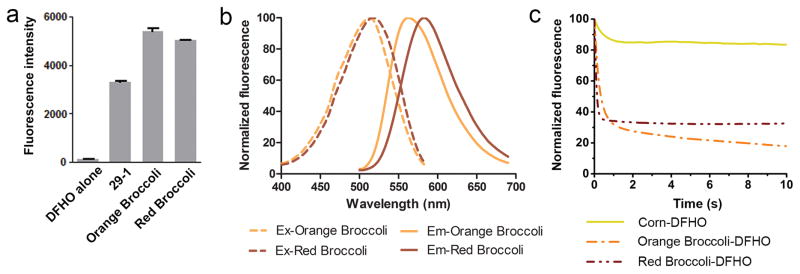Figure 3. Orange Broccoli and Red Broccoli activate and tune the fluorescence of the DFHO fluorophore.
(a) Comparison of the molecular brightness of 29-1, Orange Broccoli and Red Broccoli. The fluorescence was recorded using 20 μM RNA and 1 μM DFHO at the respective excitation and emission maxima. Error bars indicate standard deviations (n=3).
(b) Excitation and emission spectra of Orange Broccoli and Red Broccoli. Spectra were measured using 20 μM RNA and 1 μM DFHO.
(c) Corn tunes the photostability of DFHO. Solutions containing ~20 μM Corn-DFHO, Orange Broccoli-DFHO or Red Broccoli-DFHO were prepared by incubating 90 μM RNA aptamer and 20 μM DFHO. These solutions were emulsified in microscope immersion oil and aqueous droplets were repeatedly imaged under constant full-power light illumination in an epifluorescence microscope. Unlike fluorescent dyes and fluorescent proteins, the fluorophore for these aptamers exhibits reversible binding and unbinding. As a result, the photobleaching of an RNA-fluorophore complex can be reversed by rebinding of a different fluorophore. This likely contributes to the lack of complete photobleaching seen for the Red/Orange Broccoli-fluorophore complexes. Images were acquired using a 60X objective (NA 1.40) and a YFP filter cube for Corn (ex 500 ± 12 nm, em 542 ± 13.5 nm), an orange fluorescence filter cube for Orange Broccoli (ex 512 ± 12.5 nm, em 532 nm (long pass)), a red fluorescence filter cube Red Broccoli (ex 535 ± 25 nm, em 580 nm (long pass)). Exposure times were 20 ms.

